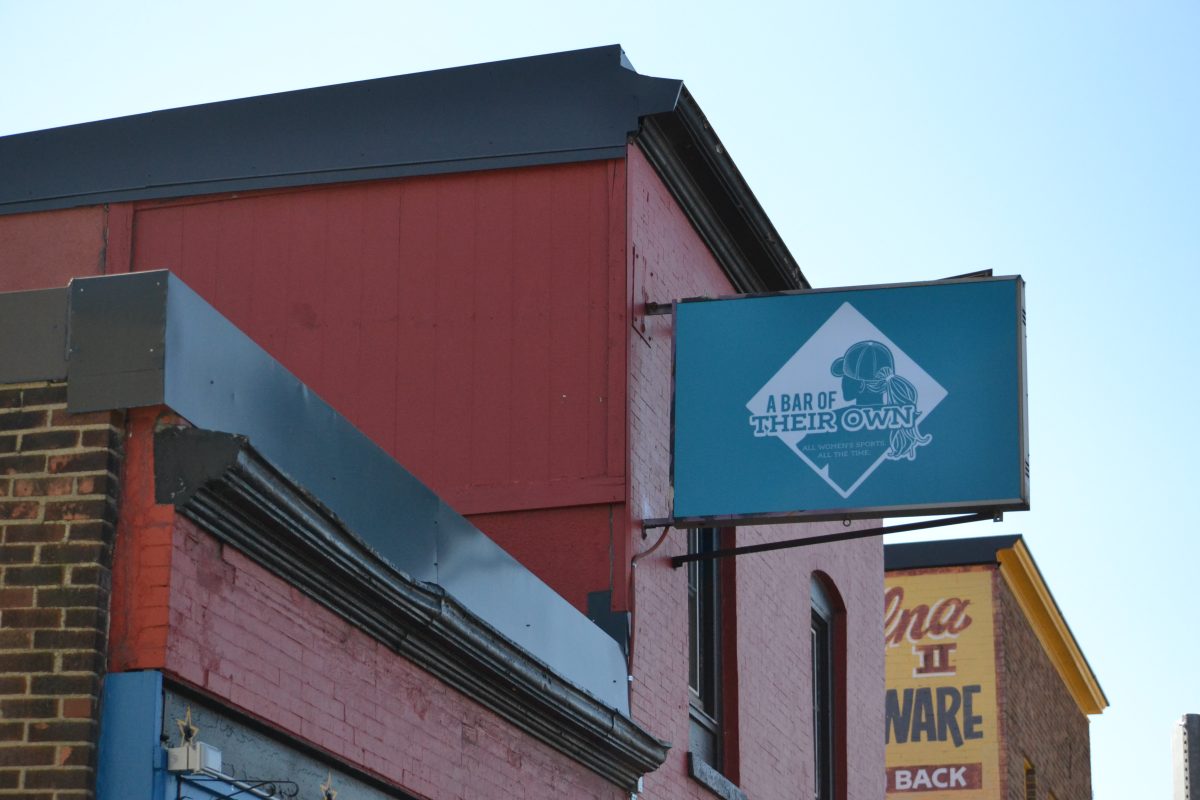A Bar of Their Own opened March 1 to celebrate women’s sports and grow fan interest amid increased national attention on women’s sports.
Located in Seward, less than a 10-minute drive from the University of Minnesota’s East Bank campus, A Bar of Their Own is the first of its kind in the Twin Cities. The bar was inspired by The Sports Bra, a women’s sports-only bar that opened in Portland in 2022, according to bar owner Jillian Hiscock.
Hiscock, who grew up in Minnesota as an athlete, was motivated by her experience as an avid women’s sports fan to create a space for the women’s sports community to feel respected and valued.
“I have always had the experience that many women’s sports fans have of having to ask to get a channel changed in order to watch the game that I want, which doesn’t make anybody ever feel prioritized,” Hiscock said. “I never felt like my fandom was worth as much as the person sitting next to me.”
Dusty Abdulghani, a server at A Bar of Their Own, said since the bar’s opening, they have seen how the bar not only grows the women’s sports community but creates a celebrated safe space for women.
“It’s rubbing off on me already. This could really do something to bring more people to be interested in women’s sports and be watching it,” Abdulghani said. “A lot of people are excited about this bar outside of the sports thing and just being able to have a safe place for women.”
Hiscock said she felt Minneapolis had an active women’s sports community in need of attention and is excited by the bar’s ability to serve Gophers sports fans.
“[We want] to make sure that all of those athletes that are spending just as much time and dedication as the men athletes are being celebrated, and we have a space where their fans can come in and watch,” Hiscock said. “We want this to be a space for Gopher fans to be able to come and hang out.”
The excitement for women’s sports is extending beyond A Bar of Their Own as the city has become a hotbed for women’s sports this year, hosting the Big Ten women’s basketball tournament in early March and the women’s Team USA Gymnastics Olympic Team Trials in June.
Historically, however, women’s sports have been underserved in media coverage and financial investment due to the incorrect assumption they have no interested audience, according to University sports sociology professor Dunja Antunovic.
Antunovic said women’s sports have been “expected to succeed under really unfavorable conditions,” which has created a fluctuating record of visibility.
“Progress has not been linear,” Antunovic said. “When we saw some increases in participation or perhaps an emergence of professional leagues, those sometimes weren’t sustainable. There was often backlash or lack of investment.”
Today, women’s sports receive about 15 percent of total sports media coverage, according to a 2023 report by Wasserman.
Hiscock said there is a growing women’s sports movement thanks to places like her bar and the prowess of female athletes like University of Iowa point guard Caitlin Clark and Louisiana State University (LSU) forward Angel Reese.
“[These things] help grow the sport when casual fans or just sports fans in general learn more about women’s athletes and women teams,” Hiscock said. “That helps everything grow.”
Viewership for the 2023 NCAA women’s basketball tournament game between Iowa and LSU was up 103 percent from 2022, according to reporting by Nielsen.
The increase in attention to women’s sports is largely due to more consistent media coverage and more prominent dialogue around gender equality, according to Antunovic.
Hiscock added while she is thrilled about the popularity of female athletes like Clark and Reese, she hopes the bar can expose people to lesser-known sports, such as roller derby, and younger female athletes.
“Think about some of the athletes that are doing incredible things that aren’t playing on a Division I team somewhere,” Hiscock said. “Two of the best high school [basketball] players in the entire country are playing in the state championship game today, but nobody knows that because we don’t talk about those athletes, and so we’re going to show those.”
Antunovic said she remains “cautiously optimistic” about the ability of women’s sports to sustain their growing platform despite evidence of positive change.
“We have very little data and we don’t know quite what happens between that college-level fandom and professional-level fandom,” Antunovic said. “We still need to learn more about if certain players have a large following during their college years, do the fans stay connected to those schools or do they sort of follow those players when they play professionally?”
Hiscock is unwaveringly confident that the current growth of women’s sports is the beginning of a better future for all sports communities and is proud of the role A Bar of Their Own can play in making that future a reality.
“[Young kids] will grow up in a world where it’s normal to have women’s sports on TV. That’s not a world that I ever imagined when I was a kid,” Hiscock said. “That gets me super excited for the future generation, for the future athletes [and] for future fans.”








